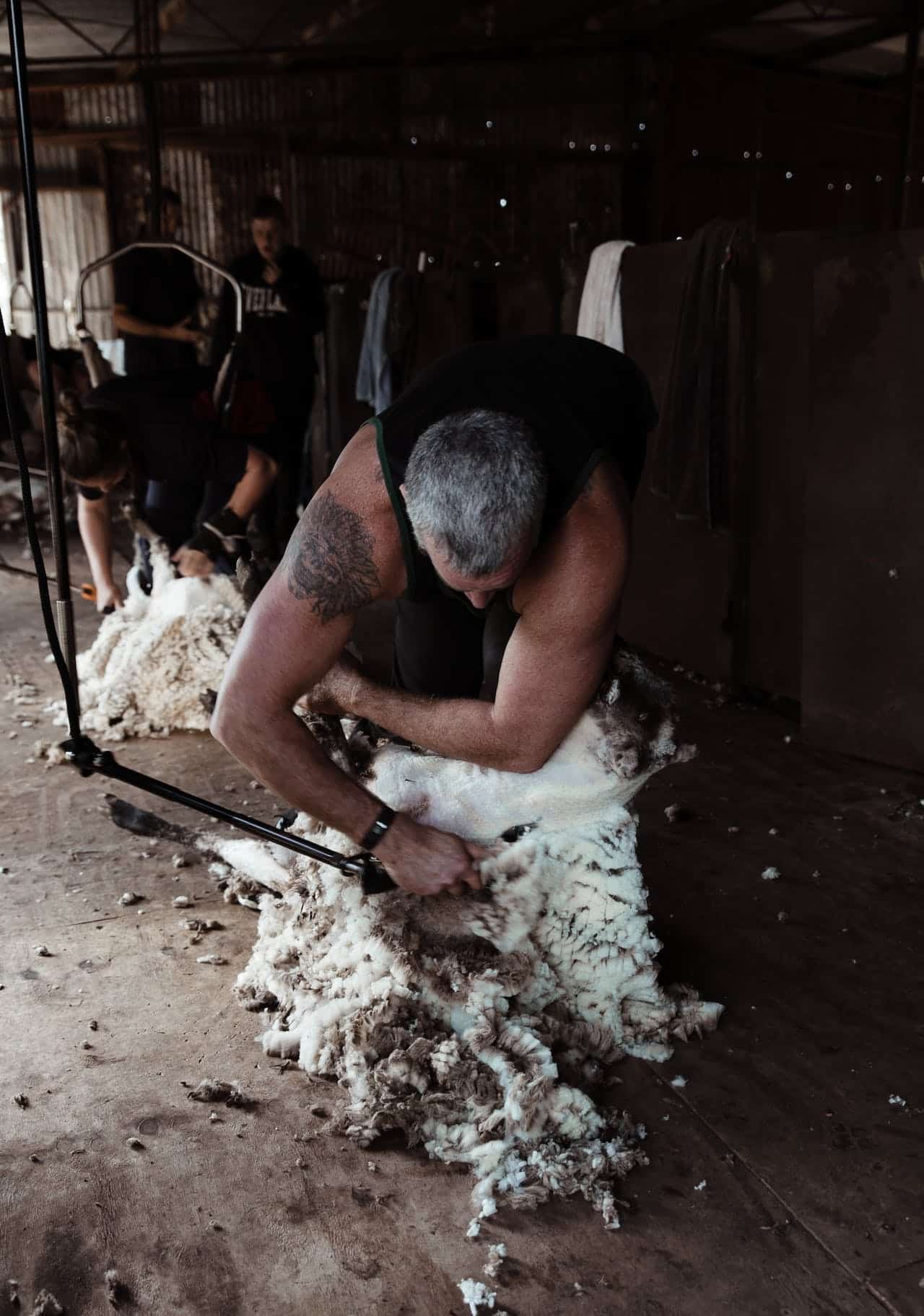Is wool really as fantastic as it seems? Here’s what you need to know.

Is wool sustainable and ethical? It’s a question that many people are asking these days. Thanks to an increased awareness of the importance of sustainability and ethics in clothing production, more consumers are seeking out garments made with responsible materials.
However, choosing better materials isn’t as easy as it sounds. Fabric sourcing and production are incredibly complex, and it’s not always clear how sustainable or ethical any given practice is. To make matters worse, there’s rampant greenwashing that makes it hard to know what’s true.
All of this means that there are a lot of myths out there when it comes to sustainability and ethics. For example, consumers are led to believe that natural fabrics are always better than synthetics, but this isn’t always the case.
And wool is perhaps the most complicated fabric of them all. Wool is often touted as an incredibly sustainable material, and its advocates champion its warmth and durability. However, the reality isn’t that simple.
Is Wool Sustainable?
This is a tricky question, and the answer isn’t black and white. In short, wool isn’t sustainable, and it’s better to buy recycled wool.
To get a full picture of wool’s environmental footprint, you have to consider the impacts of raising the sheep and then producing the actual wool.
The Environmental Impact of Producing Wool
There are more than 1 billion sheep in the world, and as you might expect, they consume immense amounts of land and resources.
Grazing plays a big role here. Grazing involves allowing sheep to roam outside and consume grass and other vegetation, and that requires space.
According to a report by the Food and Agriculture Organization of the United Nations (FAO), grazing systems cover about 60 percent of the earth’s pasture land. (For reference, the FAO noted that this is “just less than half the world’s usable surface.”)

Sheep also produce methane, a powerful greenhouse gas (GHG) that traps 80% more heat than carbon dioxide over a 20-year period. Of course, lots of carbon dioxide is also produced — not only by the sheep but also by the production process. All of this contributes greatly to the total amount of global GHG emissions.
The production of a wool sweater emits about 27 times more GHGs than the production of a cotton sweater. (Cotton production has its own issues, but it’s better than wool in this regard).
In fact, wool emits the most GHGs of any material throughout the fiber production process. It also has the third largest environmental impact of any material. That’s roughly the same impact as cow leather and polyester combined.

This is definitely enough evidence to say that the current methods of producing wool are not sustainable whatsoever.
The Life Cycle of Wool
Although its production isn’t sustainable, wool does become slightly more sustainable as its life cycle advances. That’s mostly because it’s long-lasting.
While it’s true that wool is natural and renewable, its biggest benefit is its longevity. Wool garments typically have longer lifespans than cotton or synthetic garments. As a result, wool clothing generally needs to be replaced less (especially if it’s repaired). This cuts down on the need for new wool clothing.
Wool advocates will often cite the fact that wool is 100% biodegradable, but this isn’t always true. If the wool is untreated, then it will decompose within one to five years.
However, if the wool has been treated with chemicals and dyes, it can no longer decompose naturally. It also means that those harsh chemicals will be released into the environment when the clothing is discarded.

This reinforces the fact that wool is nowhere near as sustainable as it’s often made out to be. Many people like to compare wool to synthetics, but this is an apples-to-oranges comparison. Both materials damage the environment — just not in the same exact ways.
Is Recycled Wool Sustainable?
Overall, recycled wool is much more sustainable than virgin wool. Recycled wool doesn’t require new material to be made, and it also diverts wool from landfills, which reduces waste.
Recycled wool also helps cut down on GHGs. The carbon footprint of recycled wool is roughly 16.51 times lower than that of virgin wool.
Ironically, recycled wool does require new wool to exist. Because of that, some people argue that recycled wool fuels the demand for new wool.
However, this is why many in the slow fashion community are advocating for a circular economy. Circular fashion involves recycling existing garments into new ones once they reach the end of their life spans. In this model, recycled wool clothing would simply get recycled again, eliminating the need for new fabric.
The bottom line is that recycled wool is much more sustainable than virgin wool. Recycled wool doesn’t perform quite as well, but considering how damaging wool is, this is a worthy compromise to make.
Is Wool Ethical?
Ultimately, the answer to the question of whether wool is ethical depends on your personal ethics. Here are the facts so that you can make that decision for yourself.
Mulesing and Other Controversial Practices
One of the biggest ethical issues in the wool industry is the widespread use of practices like mulesing, tail docking, and castration.
Mulesing is the practice of cutting skin from a lamb’s buttocks to prevent a parasitic infection called flystrike. This process is carried out on lambs between two and 12 weeks of age.
The practice of mulesing is often performed without anesthetic or pain relief. Painkillers are sometimes used after the procedure, but even in this case, the sheep still experience pain during mulesing.
Typically, mulesing is accompanied by tail docking (the process of cutting off part of a sheep’s tail), castration, and earmarking.
Mulesing is extremely controversial, and many people believe it to be an inhumane practice. As a result, many brands have pledged to only use non-mulesed wool.
While mulesing has been outlawed in some countries, it’s still legal in many parts of the world. Notably, it’s still legal in Australia, which produced the most wool of any country in 2022.
The Problems With Shearing Sheep
For centuries, humans have selectively bred sheep for wool growth. Consequently, today’s domesticated sheep grow much more wool than they naturally would and need to be regularly shorn. If sheep go without being shorn, they can suffer from heat exhaustion, sores, and pests.
When done correctly, shearing doesn’t hurt sheep. This gentle shearing is like getting a haircut. Sheep that have been rescued — or sheep raised on small farms — are shorn in this fashion.
However, commercial shearing is rarely gentle. That’s because shearers are often paid by yield, so the faster they work, the more money they make. This incentivizes shearers to work as quickly as possible, which often doesn’t allow for careful handling of the sheep.

It’s clear that abuse during shearing does happen in the wool industry, but it’s hard to say how much. There have been exposés showing shearers abusing sheep while shearing them, but there are also shearers who don’t abuse sheep.
Unfortunately, there’s not much neutral information out there about how sheep are treated during the shearing process.
Most of it either comes from the wool industry or PETA, so it’s unclear what’s objectively true. What is clear, though, is the fact that most shearing guidelines don’t explicitly take animal safety into account.
Wool Sustainability and Ethics FAQ
Curious about other types of wool? Here’s a quick look at how sustainable and ethical some less common forms of wool are.
Is Merino Wool Sustainable or Ethical?
Merino wool is wool sheared from Merino sheep and is no more sustainable or ethical than regular wool. Some standards, such as the ZQ Grower Standard and the Responsible Wool Standard, aim to mitigate ethical issues. However, these standards do not ban all controversial practices.
Is Cashmere Sustainable or Ethical?
There is no evidence that cashmere is exceptionally sustainable or ethical. While not comparable to wool, cashmere production is environmentally damaging in its own way.
Is Alpaca Wool Ethical?
Alpaca wool is often claimed to be more ethical than regular lambswool. This is mainly because alpacas require fewer resources than sheep. In addition, alpaca wool production is often painted as small-scale and easier on both the earth and the animals.
However, there is no hard evidence to prove that the alpaca wool industry is better than the sheep wool industry. There have also been reports of alpaca abuse.
Conclusion: Consider Alternatives to Virgin Wool
Unfortunately, wool isn’t as sustainable as many people claim. With that in mind, if you’re looking for truly sustainable clothing, avoid buying virgin wool. (Either buy clothing made with more sustainable fabrics or buy recycled or used wool).
As far as how ethical wool is, that’s a personal choice you have to make. It’s worth doing more reading on this topic so that you can make an informed decision.
Questions? Comments? Leave them below!






Ask Me Anything